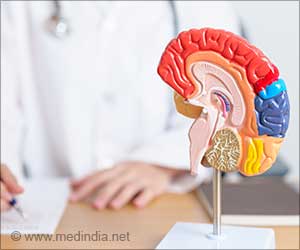Researchers at University of California Los Angeles have found that the central nervous system can reorganize itself and follow a new pathway to restore movement after a spinal cord injury.
Spinal cord injury suspends the pathway that brain uses to send messages to the nerve cells that control walking, and till now, the researchers thought that the only treatment for this was to re-grow the long nerve highways that connected the brain and base of the spinal cord.The new finding has now opened up the possibility for developing new therapies for restoring movement following spinal cord injury.
The team led by Dr. Michael Sofroniew, conducted the study using a mouse model. They blocked half of the long nerve fibres in different places and at different times on each side of the spinal cord and left the spinal cord’s centre that conveyed information over short distances up and down the spinal cord, untouched, which contained a connected series of shorter nerve pathways.
“Imagine the long nerve fibres that run between the cells in the brain and lower spinal cord as major freeways,” Nature quoted Sofroniew, as saying.
“When there’s a traffic accident on the freeway, what do drivers do? They take shorter surface streets. These detours aren’t as fast or direct, but still allow drivers to reach their destination.”
“We saw something similar in our research.”
Advertisement
The researchers blocked the short nerve pathways in the centre of the spinal cord that disappeared the regained function, returning the animals’ paralysis.
Advertisement
“Our findings add to a growing body of research showing that the nervous system can reorganize after injury. What we demonstrate here is that the body can use alternate nerve pathways to deliver instructions that control walking,” Sofroniew said.
The team will now investigate how to lure the nerve cells in the spinal cord to grow and form new pathways that connect across or around the injury site, enabling the brain to direct these cells.
“Our study has identified cells that we can target to try to restore communication between the brain and spinal cord,” explained Sofroniew.
“If we can use existing nerve connections instead of attempting to rebuild the nervous system the way it existed before injury, our job of repairing spinal cord damage will become much easier,” he said.
The study is published in Nature Medicine.
Source-ANI
LIN/P







